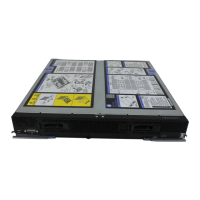IBM® Carrier Grade Server X3650 T
Revision 3.0
92
17.2.8.2.4 Query Grammar
A strictly conforming textual query expression shall conform to the following grammar, expressed using
the notation and terminology of the C Standard. The implementation may support syntactic and/or
semantic extensions to the grammar, so long as strictly conforming query expressions are interpreted
according to this query standard.
query:
and-expression
query || and-expression
and-expression:
unary-expression
and-expression && unary-expression
unary-expression:
test
! unary-expression
test:
attribute-name op integer-constant
attribute-name op string-literal
attribute-name op identifier
attribute-name
( query )
attribute-name:
identifier
op: one of = == != < <= > >= & contains
A query expression may be syntactically correct (i.e. conform to this grammar) but be semantically
incorrect. For example, the expression "recid contains 3" is accepted by the grammar but makes no
sense semantically. Semantic rules are explained in the following sections. syscon_log_query_create()
shall fail if the query expression is syntactically or semantically incorrect, and this determination can be
made at the time of the call to syscon_log_query_create().
17.2.8.2.5 Lexical Elements and Semantics
Blanks (spaces), horizontal tabs, and newlines (collectively, "white space") are ignored outside of
character string literals, except as they serve to separate tokens.
As in the C language, if the textual query expression has been parsed into tokens up to a given character,
the next token is the longest sequence of characters that could possibly constitute a token.
As in the C language, the expression "x || y" evaluates to zero if x and y both have the value zero;
otherwise it evaluates to 1.
As in the C language, the expression "x && y" evaluates to 1 if x and y both have non-zero values;
otherwise it evaluates to zero.
When used with integer values, each of the following operators has the meaning specified for that token
in the C language: "==", "!=", "<", "<=", ">", ">=". When used with character-string values, these
